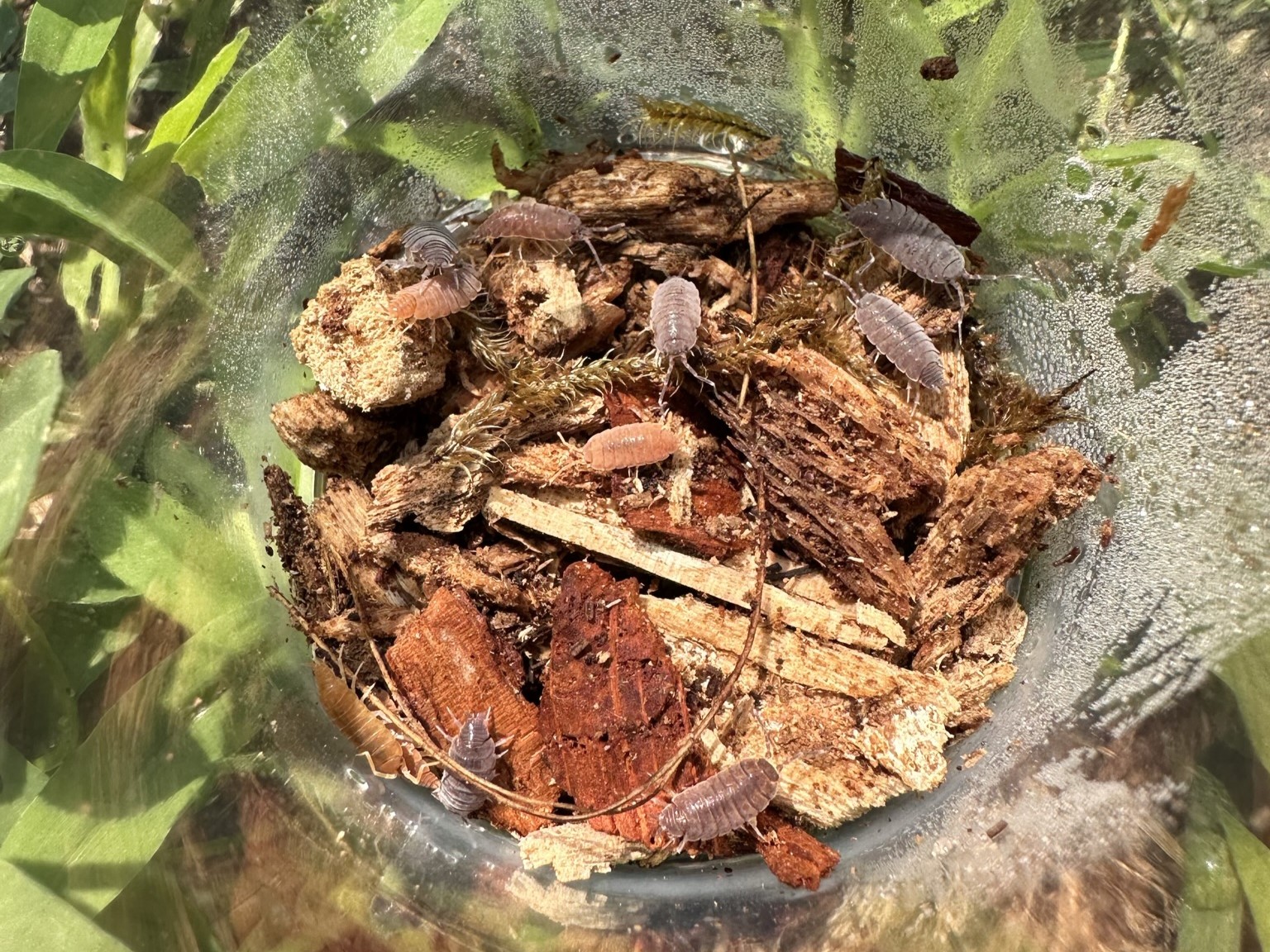So you just bought a cup of isopods, what now?
Those tiny cups can actually last over 2 months for your little isopods, as long as they are properly fed and cared for. Since they are fully stocked with wood, leaf litter, calcuim, and other important habitat needs, they are ready to go. The only thing you need to do is add a little water. We recommend using a spray bottle to mist the cup once a week. This will keep the isopods hydrated and happy. If you notice the cup is drying out, you can add a little more water. If you notice the cup is too wet, you can leave the lid off for a few hours to let it dry out. Be sure to put a tissue or paper towel over the top so they don't escape!
This article explains how to keep your isopods fed and cared for while you prep their
main habitat.Temp & Humidity:
Most species seem to be more productive when kept in the mid to high 70s F, and slightly moist. You will want to keep your isopods somewhat moist. We mist all our Isopod terrariums once a week and keep the room they are held in at at least 60% humidity. If you notice the cup and soil is dry, they need to be misted. Alternativly, if there is standing water, you'll want to let it dry out a bit.
Feeding:
Isopods will feed upon a wide variety of foods. When they are in their cup, we typically offer high protien fish flakes once a week and also eggshells for calcium. You can also feed them a variety of fruits and vegetables. Be sure to remove any uneaten food after a few days to prevent mold.
Adding Isopods to the Vivarium:
If you're ready to add the isopods to the vivarium, then the entire cup can be added. We like to spread out the soil and leaf litter from the cup so the isopods have somewhere safe to stay. Be sure to read our article on culturing isopods to learn how to keep your isopods happy and healthy.
Conculsion:
Isopods, although not necessary to successfully keeping dart frogs or other amphibians and reptiles, certainly make proper husbandry easier. They play an important function in the home vivaria – mainly as nutrient cyclers and an additional food source, and also function as an excellent secondary source of calcium. They are simple to keep and to culture at home.

